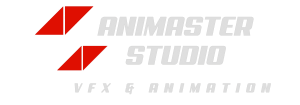Advanced Character Animation Techniques

Character animation is at the heart of storytelling in animation. Whether it's a beloved cartoon character from childhood or a compelling figure in a blockbuster movie, well-crafted characters have the power to resonate with audiences on a profound level. Behind every memorable character lies a meticulous process of animation that brings them to life on screen. In this article, we'll explore the art and techniques of character animation, delving into the creative process that animators use to breathe personality and emotion into their characters.
Understanding Character Animation
At its core, character animation is about creating movement and expression that convey the personality, emotions, and actions of a character. This process involves a blend of technical skill, artistic creativity, and storytelling prowess. Animators must consider various elements such as anatomy, timing, weight, and appeal to craft believable and engaging characters.
Storyboarding and Character Development
Before diving into the animation process, it's essential to have a clear understanding of the character's personality, traits, and backstory. Storyboarding plays a crucial role in this phase, as it helps visualise key moments and expressions that define the character's journey. By sketching out rough poses and actions, animators can establish the character's movements and refine their performance.
Modeling and Rigging
Once the character design is finalized, it's time to bring them into the digital realm. Modelers create 3D models of the character, paying attention to details such as proportions, textures, and facial features. Rigging artists then add a skeleton structure to the model, allowing animators to manipulate the character's movements like a puppeteer. A well-rigged character provides flexibility and control, enabling animators to achieve lifelike motion and expression.
Keyframe Animation
Keyframe animation is a fundamental technique in character animation, where animators define key poses and movements at significant points in the animation timeline. By setting keyframes and interpolating between them, animators create fluid motion that conveys the character's actions and emotions. This process requires careful attention to timing, spacing, and exaggeration to achieve convincing performances.
Facial Animation and Lip Sync
The face is a vital aspect of character animation, as it conveys a wealth of emotions and expressions. Facial animation techniques involve manipulating the character's facial features such as eyebrows, eyes, and mouth to reflect their mood and personality. Lip sync is another crucial element, where animators sync the character's lip movements with dialogue or sound effects to create a seamless connection between speech and expression.
Secondary Animation and Polishing
In addition to primary movements, secondary animation adds depth and realism to the character's performance. This includes elements such as hair, clothing, and accessories that react to the character's movements and environment. Animators pay attention to details such as gravity, wind, and inertia to create believable secondary motion that enhances the character's presence on screen.
Character animation is a nuanced and multifaceted process that requires a blend of technical skill, artistic creativity, and storytelling prowess. By understanding the principles and techniques of character animation, animators can breathe life into their creations and evoke emotion in audiences worldwide. Whether it's a whimsical cartoon character or a lifelike digital avatar, the art of character animation continues to captivate and inspire audiences of all ages.
